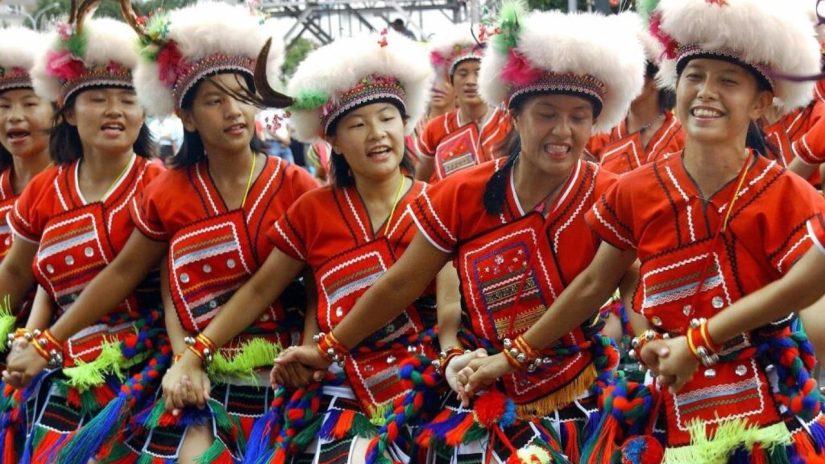
Written by Athanasia Safitri
Gaoshan Zu is an ethnic minority in Taiwan which is recognized as an official ethnic designation by the Chinese government. Because of the two regimes since 1949 which are the Mainland China and The Taiwan Island, there was alienation of these indigenous people with their Taiwanese family. They could not get back to their hometown and as a result the young generation do not even speak their native language. Their spoken language itself belongs to the Indonesian group of the Malay/Polynesian language family. Their cultural trait deals with songs and dances which are depicted in their social life on holidays but very much declining because of the lost generation up until the 1980’s where the young generation do not even know the tradition and meaning of dancing, singing, and gathering.
In the Wednesday Forum on 4 October 2023, Yuqiong Lin, a PhD candidate from Zhejiang University in social anthropology studies, presented her research about the strong contrast between the enthusiasm for dance and the alienation of dance in the daily life of the Gaoshan people, the ethnic tribe in Hua’an, Fujian. She focuses on cultural development of ethnic groups in the southeast of China, especially related to dance performance. She uses holistic perspective to learn that dances can be viewed as a way for the ethnic group to make the performance as a character of local society, not only of the ethnic group itself.
What is the dancing and singing of Gaoshan Zu?
Due to better economic development, there was the beginning of the dance learning process following the tracking of relatives in Taiwan. This generation tries to do the dancing for the life of their ancestors and to respect the culture. They want to learn to dance from a dance teacher between the year of 1990 – 2000, from a dance coach from 2000- 2019, and since then with the indigenous people. The meaning of Gaoshan Zu dance performances has been changing over the past thirty years. From the discourse of aesthetic of ethnic culture into an intangible cultural heritage, also the discourse of development in the form of supportive policy for minority nationalities in the period of 1990 – 2010. After 2010 onward, there is another discourse of sport which creates national games for ethnic minorities, while from 2019 there has been interaction between people in general with Taiwan indigenous people.
Research found the meanings and relationships expressed by different forces of the dance prerequisite the next production of meaning. The indigenous people of Taiwan now are considered as a study representative of authentic culture. However there are competitions to expose this authenticity and even a more designed dance to show inter ethnic and intra ethnic contexts which perform interaction within different groups, while still maintaining uniqueness. Lin states that the study of Gaoshan Zu dance explains the identity in Chinese people which consists of two identities: cultural identity relates with ethnic and political identity relates with nationality. In addition to that, there is an invention of tradition that results in the existing culture. The indigenous people of Taiwan now are considered as a study representative of authentic culture. However there are competitions to expose this authenticity and even a more designed dance to show inter ethnic and intra ethnic contexts which perform interaction within different groups, while still maintaining its uniqueness.
Behind the dancing performances
Twenty-nine hundred Gaoshans now live on the mainland. Though small in number, these Gaoshans have their deputies to the National People’s Congress, China’s supreme organ of power. They enjoy equal rights in the big family of all ethnic groups on the mainland. The Gaoshan people share the aspiration of all other ethnic groups in China for peaceful reunification of the motherland, so that people on both sides of the Taiwan Straits will be reunited. Since 2021, there has been an event of Consolidating the sense of Community for the Chinese people and starting this year there is a Cross-Strait Chinese Farmers’ Harvest Festival to bring the community together.
Meaning of cultural performances not only about Gaoshan people but many aspects in life and how society works for different people. Lin in her presentation also mentioned that various agencies emphasise the rationality and sophistication of the performance by inventing and updating specific content to contribute to regional development, tourism, cultural events for public and many cross regional exchanges. Now the dancing performances of Gaoshan Zu have contributed to the national development plan in China. It also transforms the cultural performance into a total social phenomenon which illustrates the operational process of real society.
